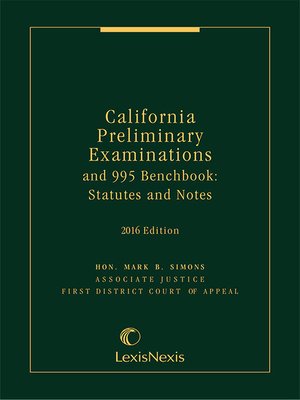
Sign up to save your library
With an OverDrive account, you can save your favorite libraries for at-a-glance information about availability. Find out more about OverDrive accounts.
Find this title in Libby, the library reading app by OverDrive.



Search for a digital library with this title
Title found at these libraries:
| Loading... |
Originally designed as a brief hearing to weed out groundless felony complaints, the preliminary examination has become, perhaps, the most important stage of the criminal process in California. Set in court soon after the filing of the criminal complaint, the examination is the time and place for the superior court judge, called a magistrate during these proceedings, to determine the sufficiency of the evidence against the accused and to consider motions to suppress that evidence. When the prosecution satisfies its burden of proof, the defendant is bound over for trial. When it fails to do so, the magistrate dismisses the complaint and discharges the defendant. Each of these decisions is reviewable in the superior court.
However, the significance of the examination, commonly referred to as the preliminary hearing, far exceeds this screening. It provides an opportunity for the prosecutor and defense lawyer to assess the respective strengths of their cases. Depositions and interrogatories are foreign to California criminal procedure. Thus, the examination is the only pretrial occasion for counsel to require the attendance of a witness and examine that witness on the record.
The eBook versions of this title feature links to Lexis Advance for further legal research options.






